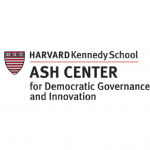
Many people who have successful STEM careers grew up with the mindset of wondering not if but where they would attend college. That’s not the case for many students in Alaska, though. It is even less likely that this is the case for those from rural communities, where residents often lack exposure to higher education. The Alaska Native Science & Engineering Program is working to change that by helping students realize their full potential and start working toward their goals at an early age.
Through components like Middle School Academy, ANSEP sparks an early interest in science, technology, engineering and math and helps students envision college as part of their future. Through hands-on, interactive activities, the students realize real-world applications for the skills they learn in class and how those translate to STEM careers that can positively impact their communities.
This year, ANSEP is hosting all-expenses-paid Middle School Academy sessions in partnership with the Bering Strait, Kashunamuit, Kenai Peninsula Borough, Lower Kuskokwim, Lower Yukon, Matanuska-Susitna Borough, Juneau, Chatham, Hoonah City, Haines Borough, Lake and Peninsula, Bristol Bay Borough, Dillingham City, Southwest Regional and Northwest Arctic Borough school districts as well as the Bristol Bay Native Corporation, Sealaska Corporation, Alaska Community Foundation, Huna Totem and ConocoPhillips. Following a college-style application process, middle school students from across Alaska are accepted based on their academic performance and essay application responses. Students currently enrolled in sixth, seventh or eighth grade are eligible to apply.
Through interactive, educational activities like visits to the planetarium and Alaska SeaLife Center, squid dissections and earthquake engineering labs, students see practical uses for STEM education in everyday life. Some of the team-building activities include:
Balsa wood bridge build: Industry professionals provide students with a foundation in structural engineering before students design and build their own bridges. From using the beam theory to calculate force to testing how certain materials buckle under tension, students see first-hand uses for engineering in everyday life.
Snug house activity: Renewable Energy Alaska Project professionals teach students about the importance of balancing heating cost and heating efficiency using different types of insulation, learning about insulation R-value, renewable energy sources, and applying some of these concepts to buildings in Alaska by assembling their own insulation barriers inside of a wooden box, or “snug house”, to model an actual arctic building wall. After assembling their model buildings, students test the temperature and calculate the cost efficiency of their designs.
Computer build: Students assemble computers to learn about how they work, what role each part has, and how to install the operating system and software. An added incentive is that any student who maintains a “B” average in math and science and completes Algebra I before high school can keep the computer he or she built.
Windmill challenge: Students compete in a windmill challenge to see how wind turbines work to capture energy and convert it to usable mechanical energy. Using limited materials within a designated timeframe, the students design and build windmills capable of lifting heavy objects.
Each Middle School Academy component invites approximately 50 students to experience a college lifestyle on the University of Alaska Anchorage campus. For many students, Middle School Academy is their first time leaving home or traveling without their parents. Cultural activities make students feel at home and help them bond with peers from across Alaska. Participating in challenging activities, working alongside real engineers, scientists and professors and living in college dorms establishes a sense of comfort and familiarity with STEM education and the college lifestyle.
By making STEM education exciting and demonstrating how this education can translate into a successful career, Middle School Academies help students jumpstart their future. Students leave the two-week component feeling confident to succeed in high school, college and beyond.



